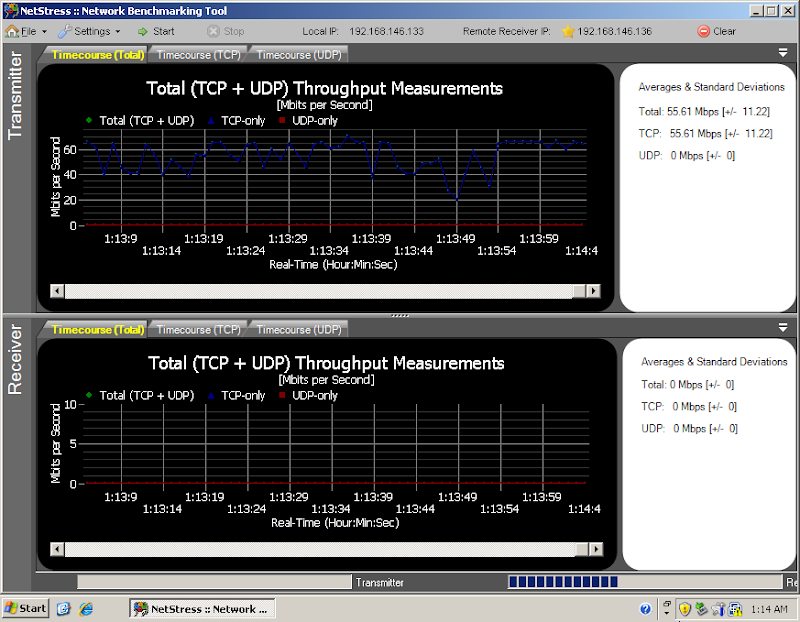- For the speed check you can download iperf3 client for your operating system. To start the app you need to run the console (enter the “cmd” in the Start menu) 7. In console go to the iperf3 client installation directory (in our case this is D: Programs iperf-3.1.3-win64) 8. To get the help in usage, enter the iperf3 command.
- 2- SSH to the box and run the following command from the CLI to download the iperf3 image: docker pull networkstatic/iperf3 3- Create a temporary container running iperf3 as a server. Type: docker run -it -rm -p 5201:5201 networkstatic/iperf3 -s 4- From your a computer, install iperf3 (under Windows, I found the binaries here: https://iperf.fr.

Iperf is available for Windows, Arch Linux, Ubuntu, Android, iOS, and more. Since this post is about how to install and use Iperf on Windows, I limit my explaination to installing and using Iperf on a Windows 7/8 computers with 32/64-bit processors respectively. The process is fairly thesame for other versions of Windows. Downloading Iperf. Access the directory where your project's compiled executable file is located. With Quality of Service. 5 January 2016 - IPERF Charts for Windows with User Interface released. Native Win32 port (not Cygwin) with QoS (DSCP set). Free download of trial version is available. Using command-line version of IPERF for Windows. IPERF User Interface.
Iperf is a great networking tool for performing end-to-end throughput tests. These tests can be layer two or layer three. But as simple the use of Iperf is, it is only popular among experienced network engineers. In this post, we will look at how to install and use Iperf on Windows for throughput test.
The Iperf tool is a freeware that can be run as executable file either in server or client mode. It is purely command line and that explains the reason why only a few people use it. Iperf is available for Windows, Arch Linux, Ubuntu, Android, iOS, and more. Since this post is about how to install and use Iperf on Windows, I limit my explaination to installing and using Iperf on a Windows 7/8 computers with 32/64-bit processors respectively. The process is fairly thesame for other versions of Windows.
Downloading Iperf
Install Iperf Windows Service Centre
To download Iperf, simply look up the word “Iperf” on Google and click on the first option in the results or click here. You can check the speed of your internet connection at www.speedcheck.org to see if your bandwidth is good enough. A connection speed of 3 -5mbps will be just fine. If you are downloading for a Windows computer, click on the first option named Iperf for Windows. choose the one for your Windows version and Iperf will be downloaded. Now, by default, it goes into your download folder. To simplify the execution process, copy the Iperf folder from your download folder to your desktop and unzipped the folder to extract the executable file named iperf3.
Running Iperf in server mode

To run the Iperf executable file, open the command prompt. This can be done by typing the “cmd” into the search field after you have clicked on the start button. Next, change your directory to the directory housing the Iperf folder. To change your directory to desktop, simply type “cd desktop” and hit the enter key. See image below
Install Iperf Windows Service Centre
To move into the Iperf folder, change your directory once more to the Iperf folder by typing “cd Iperf” as shown below. Since I have another folder named Iperf, I will furthermore change my directory to Iperf once more. Now, what is left is the executable file named iperf3. To run Iperf in server mode, I will type the command “iperf3.exe -s from the Iperf directory. See image below:
Running Iperf in client mode
On the client side, simply use the command as shown in the image below to run Iperf in client mode. Note that the IP address on the server side must be included in the command.
From the result of the test, can see the bandwith available to us at different Megabytes of data transferred. The average is 56.4 Mbps on both upload and download for 67.2 Megabytes of data sent or received.
Related
Related posts:
iperf2 was orphaned in the late 2000s at version 2.0.5, despite someknown bugs and issues. After spending some time trying to fixiperf2’s problems, ESnet decided by 2010 that a new, simpler toolwas needed, and began development of iperf3. The goal was make thetool as simple as possible, so others could contribute to the codebase. For this reason, it was decided to make the tool singlethreaded, and not worry about backwards compatibility withiperf2. Many of the feature requests for iperf3 came from theperfSONAR project (http://www.perfsonar.net).
Then in 2014, Bob (Robert) McMahon from Broadcom restarteddevelopment of iperf2 (Seehttps://sourceforge.net/projects/iperf2/). He fixed many of theproblems with iperf2, and added a number of new features similar toiperf3. iperf2.0.8, released in 2015, made iperf2 a useful tool. iperf2’scurrent development is focused is on using UDP for latency testing, as wellas broad platform support.

As of this writing (2017), both iperf2 and iperf3 are being actively(although independently) developed. We recommend being familiar withboth tools, and use whichever tool’s features best match your needs.

Iperf Windows Xp
A feature comparison of iperf2, iperf3, and nuttcp is available at:https://fasterdata.es.net/performance-testing/network-troubleshooting-tools/throughput-tool-comparision/